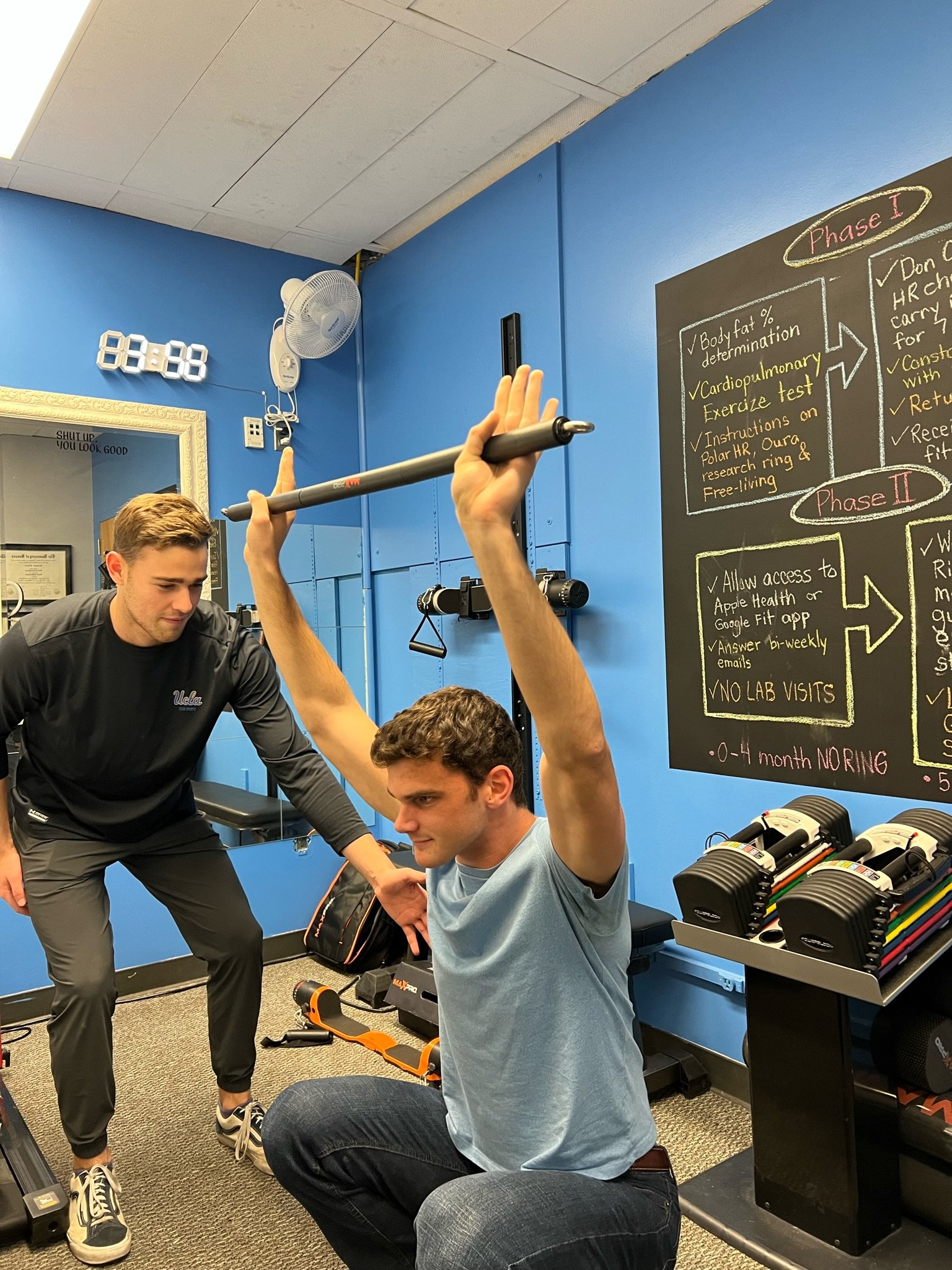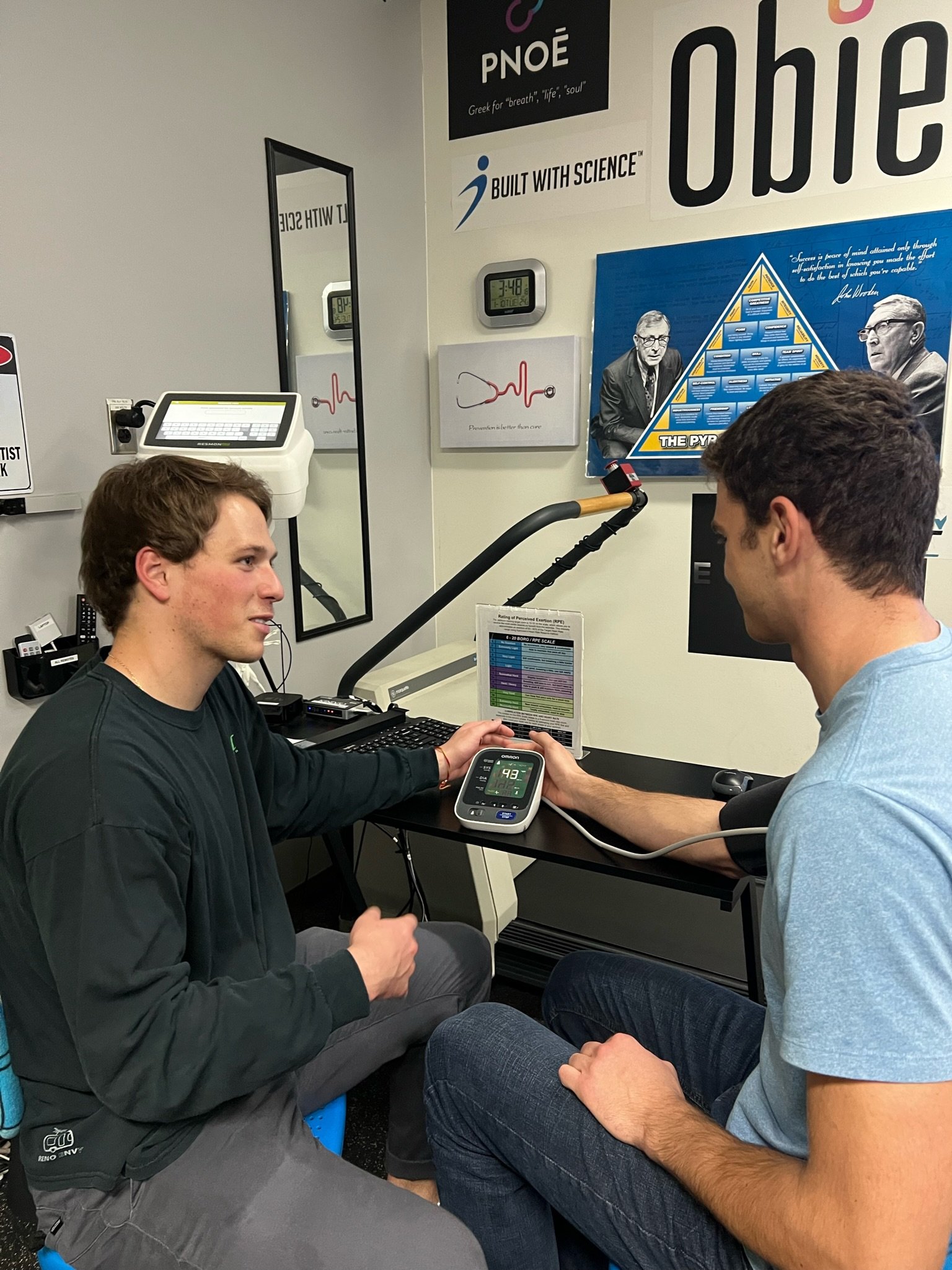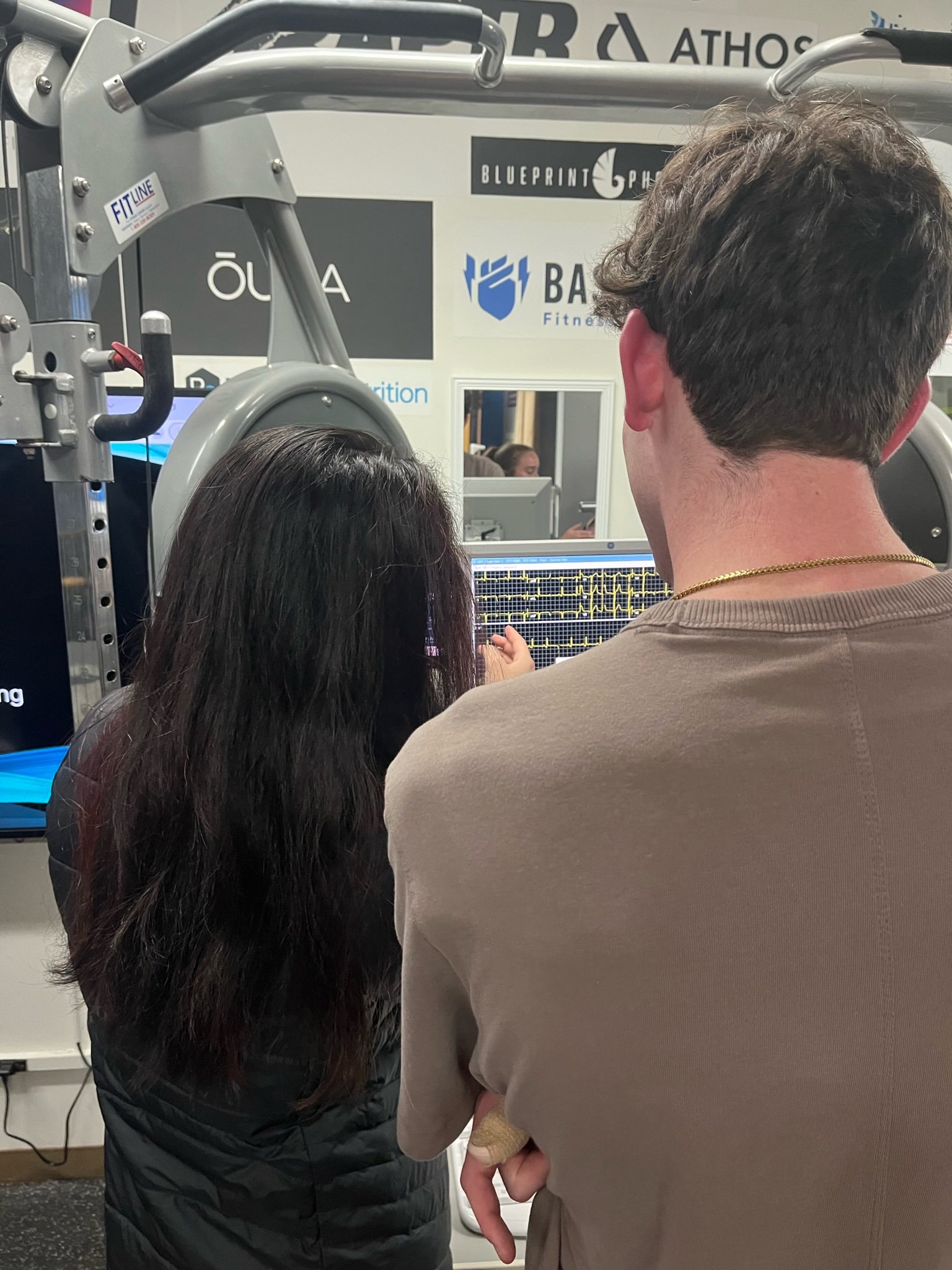Lab Assessments
-

Aerobic Performance
Aerobic performance, or cardiorespiratory fitness, is one’s ability to perform dynamic exercise at moderate-high intensities, utilizing large muscle groups, for prolonged periods. The ability to perform such exercise depends on the functional ability of the cardio (heart), respiratory (lungs), vascular (blood), and musculoskeletal systems.
-

Pulmonary Function
The pulmonary system consists of the organs and structures involved in breathing, such as the trachea, lungs, and alveoli. The ability to properly inspire and expire air is essential to a healthy lifestyle. Pulmonary function tests are a broad range of tests that measure lung function - i.e. how well the lungs move air in and out of the body and how efficiently they transfer oxygen to and carbon dioxide from the blood.
-

Body Composition
Body composition is a breakdown of the total mass of a human body into a ratio of comprising tissues, including bone, organs, fascia, tendons, ligaments, muscle, and fat. In medical and athletic environments, body composition is typically considered in two categories: lean body mass and body fat (or fat-free-mass and fat mass). Based on total body fat percentages, individuals can be quantitatively categorized as either underweight, healthy, overweight, obese or morbidly obese.
-

Muscle Performance
Muscle performance consists of muscular strength, muscular endurance, muscular power, and anaerobic power, and is an integral portion of both health- and sport-related fitness. Muscular strength is defined as the maximal force that can be generated by a muscle group. Muscular endurance is the ability of a muscle group to repeatedly perform muscle contractions over a period of time that is sufficient to cause muscular fatigue. The ability to produce maximal force at a rapid velocity of movement underlies both muscular and anaerobic power.
-

Functional Movement Screen (FMS)
The Functional Movement Screen (FMS) is a ranking and grading system consisting of seven movement patterns that are foundations of normal movement. The FMS analyzes the contribution of the entire body to each movement, giving an accurate picture of how our bodies actually function in day-to-day life. By screening these patterns, which include elements of stability, mobility, and symmetry of movement, the FMS readily identifies functional limitations and determines future risk of injury.
-

Total Energy (Caloric) Expenditure
Total energy expenditure is the amount of energy required to sustain and move the body each day and is the sum of three components: resting energy expenditure, dietary thermogenesis (the energy expenditure of digestion), and activity thermogenesis (the energy expenditure of activity). Each of these components is highly variable based on intrinsic and extrinsic factors, resulting in a wide range of energy expenditure values amongst individuals.
-

Sleep Quality
Sleep quality is a measure of how effectively the body restores function, both physically and cognitively, during long periods of rest. Total time asleep and proper cycling between sleep stages are important components of sleep quality.
-

Cardiovascular Health risk & HRV
Cardiovascular disease is any disease that affects the cardiovascular system, principally heart disease, vascular diseases of the brain and kidney, and peripheral arterial disease. Assessment of cardiovascular health risk is the starting point for discussions between healthcare providers and individuals potentially at significant risk of a cardiovascular event.
-

Posture
Posture refers to the alignment of our body segments at any moment during a given activity. Poor posture can result from bone or muscle disease but is more commonly due to repetitive motions, poorly designed work or recreational environments (ergonomics), and bad habits.
-

Performance Tracking
Performance tracking involves the aggregation of one’s physiological metrics in various settings during exercise, activities-of-daily living, and sleep. UC Fit’s Digital Health Network (DHN) web portal, combined with a wearable physiological status monitor (PSM) chest strap and smartphone technology, allows the collection of these metrics in real-world environments while actually performing the activities of interest.
-

DLCO
The diffusing capacity of the lungs for carbon monoxide (DLCO) is a 10-second breathe-hold measurement (single breath method) that helps to determine the lung’s ability to transfer gas from inspired air through the bloodstream. It measures the uptake of carbon monoxide (CO) per unit time/per mm of driving pressure of CO. Since hemoglobin affects DLCO, a hemoglobin value must be provided on the day of the study or within the past 3 days via a venipuncture.
-

6 Minute Walk Test (6MWT)
This is a sub-maximal exercise test used to assess aerobic capacity and endurance. The distance covered over a time of 6 minutes is used as the outcome by which to compare changes in performance capacity.
-

Spirometry
A spirometer is used to measure how much air a person’s lungs can hold (air volume) and the speed (air flow rate) of inhalation and exhalation during breathing. Values measured include FVC, FEV1, FEV1/FVC, FEF25%-75% and PEF.
-

Plethysmography
Lung plethysmography is more accurate than spirometry and is based on Boyle’s Law, a scientific principle that describes the relationship between the pressure and volume of a gas. You’ll sit in a small, airtight chamber with a nose clip and be asked to breathe or pant against a mouthpiece when it’s both opened and closed. This will provide important measurements, including total lung capacity (TLC), functional residual capacity (FRC) and residual volume (RV).
